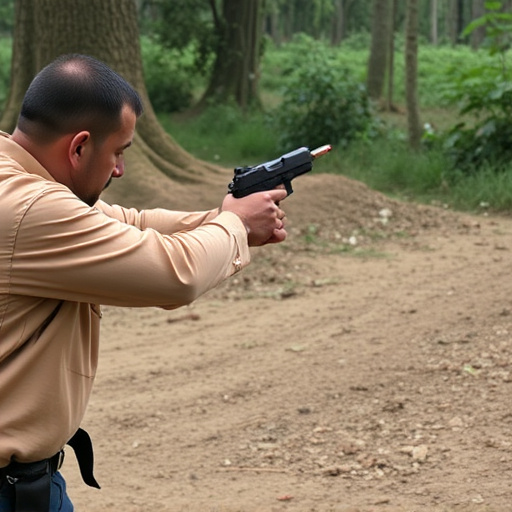Tactical stun guns with LED flashlights offer non-lethal self-defense and law enforcement solutions. They paralyze targets with electric shocks, temporarily immobilizing them. Features include high voltage/low amperage settings, LED lighting, and versatile design. Training, knowledge of local laws, maintenance, and testing are crucial for safe use. Tasers vs. stun guns differ in battery life (Tasers: disposable, stun guns: rechargeable), range (Tasers: 15-20 ft, stun guns: 3-10 ft), and legality varies globally, with many countries regulating their ownership.
In the realm of personal safety and self-defense, Tasers and stun guns stand out as powerful tools. This article offers an in-depth look at these devices, their differences, and unique applications. Understanding how Tasers work and their diverse applications sets them apart from traditional stun guns. We explore key features, safety considerations, and tactical use cases, guiding you through the selection process. Additionally, we compare power sources, analyze performance, and delve into legal implications, including regulations and permits for carrying a tactical stun gun with LED flashlight.
- Understanding Tasers: How They Work and Their Applications
- Stun Guns: Key Features and Safety Considerations
- Tactical Use Cases: When to Choose Each Device
- Power Sources Compared: Rechargeable vs Disposable
- Range and Effectiveness: Taser vs Stun Gun Performance
- Legal Implications: Regulations and Permits for Carrying
Understanding Tasers: How They Work and Their Applications
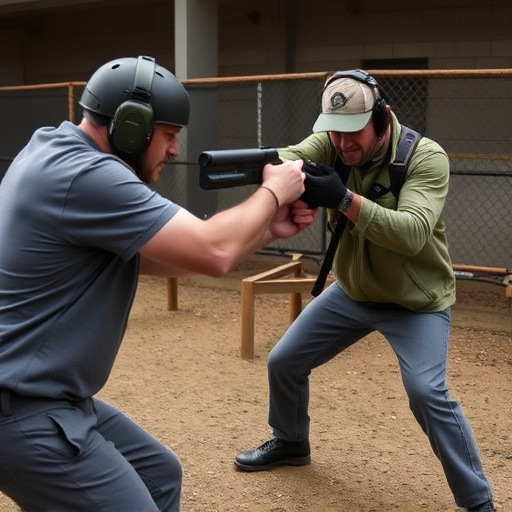
Tasers, officially known as Electronic Control Devices (ECDs), are powerful tools used for non-lethal self-defense and law enforcement applications. They function by delivering an electric shock to a target, temporarily paralyzing them. The device fires two thin probes connected to wires, which make contact with the subject’s skin, disrupting the body’s neuromuscular system. This results in muscle contractions, causing the individual to fall to the ground and become immobilized for several minutes.
These tactical stun guns with LED flashlights are versatile tools favored by professionals due to their effectiveness and convenience. They can be used in various scenarios where a non-lethal force is required, such as crowd control, domestic disputes, or when dealing with resistant suspects. The LED flashlight feature adds practicality, providing illumination during low-light conditions, which further enhances their utility in tactical situations.
Stun Guns: Key Features and Safety Considerations
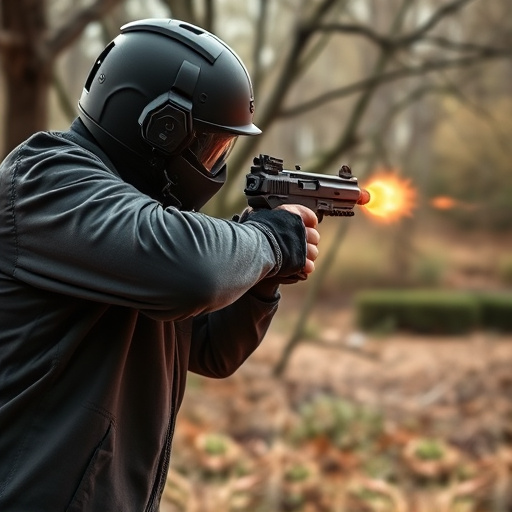
Stun guns, also known as electroshock weapons, are non-lethal self-defense tools designed to temporarily incapacitate a target through electric current. Key features include high voltage and low amperage settings, which disable an assailant without causing permanent harm. Many tactical stun guns with LED flashlights offer enhanced visibility during low-light situations, providing users with a versatile defense mechanism.
Safety considerations are paramount when wielding a stun gun. Proper training is essential to ensure accurate deployment and minimize the risk of unintended injuries. Users should be aware of local laws and regulations governing stun gun ownership and use. Additionally, maintaining proper maintenance and regularly testing the device’s functionality is crucial for reliable performance in critical situations.
Tactical Use Cases: When to Choose Each Device
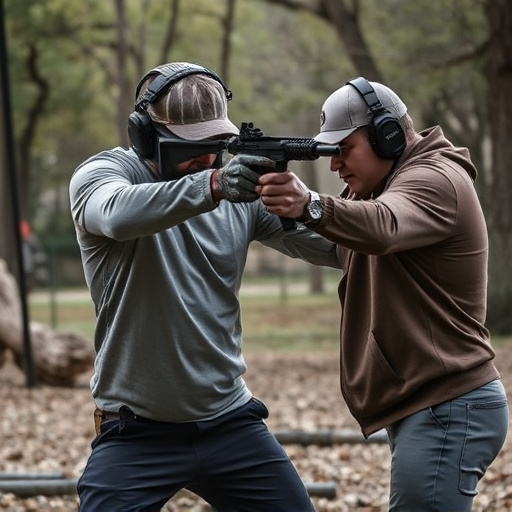
When it comes to tactical situations, choosing between a taser and a stun gun depends on specific needs. Tasers are primarily designed for law enforcement and military use, offering a non-lethal means to incapacitate targets with electric current arcs that disrupt muscle control. They are ideal for high-risk scenarios where disarming an individual without causing permanent harm is paramount.
On the other hand, stun guns, often equipped with a tactical LED flashlight, cater more to personal defense applications. These devices deliver powerful electrical pulses designed to temporarily paralyze an attacker, providing users with precious time to escape or call for help. Stun guns are popular choices for individuals seeking effective self-defense options in low-light environments, ensuring both safety and the ability to maintain mobility during a confrontation.
Power Sources Compared: Rechargeable vs Disposable
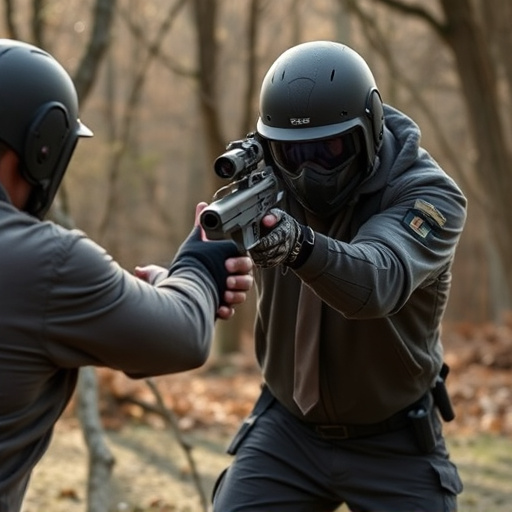
When comparing a taser and a stun gun, one key difference lies in their power sources. Tasers typically rely on disposable batteries, which offer a single use before requiring replacement. This can be seen as a disadvantage for users who need reliable backup during extended operations. In contrast, many modern stun guns come equipped with rechargeable batteries, allowing for repeated use without the constant need to replace expensive or hard-to-find batteries.
Rechargeable power sources are especially beneficial for tactical situations where portability and longevity are crucial. A tactical stun gun with LED flashlight, for instance, can be a valuable tool for law enforcement officers and self-defense enthusiasts alike. By choosing a rechargeable model, users can ensure they’re always ready to deploy the device when needed, making it a more versatile and cost-effective option in the long run.
Range and Effectiveness: Taser vs Stun Gun Performance
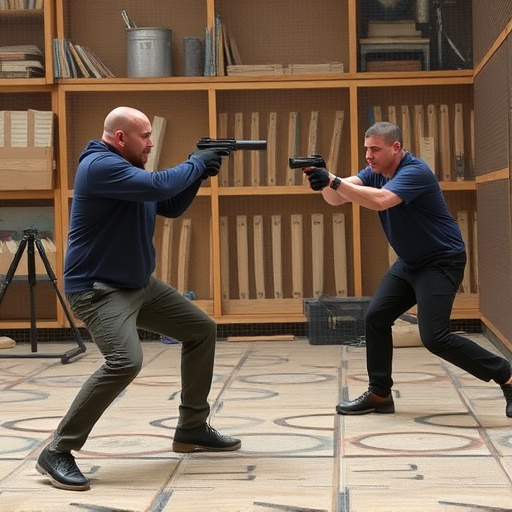
When comparing a taser and a stun gun, understanding their range and effectiveness is crucial for choosing the right tactical tool. A taser is known for its ability to deliver powerful electrical shocks from a longer range, often up to 15-20 feet (4.5-6 meters), making it an excellent choice for non-lethal force in various scenarios. This long-range performance allows users to subdue targets at a distance, providing a strategic advantage.
On the other hand, stun guns have a shorter effective range, typically around 3-10 feet (0.9-3 meters), but they offer a more focused shock. Stun guns are designed to temporarily incapacitate by delivering a strong electrical discharge directly to the target’s body. Some advanced tactical stun guns even feature an integrated LED flashlight, enhancing visibility and versatility during low-light or dark conditions. This makes them popular choices for close-quarters encounters where quick, intense disorientation is required.
Legal Implications: Regulations and Permits for Carrying
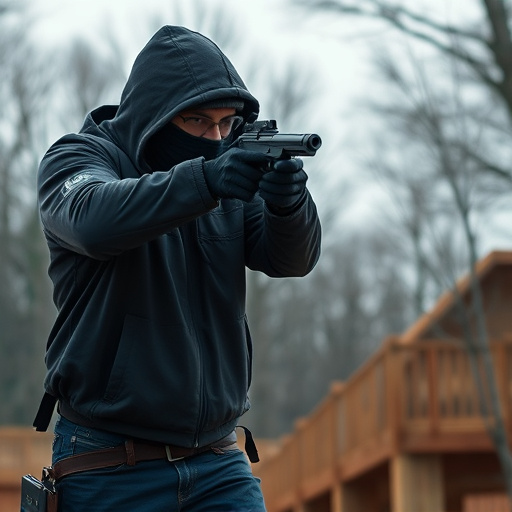
The legal implications of carrying a taser or stun gun vary greatly depending on your location. In many countries, both are subject to strict regulations due to their potential for misuse. Owning and carrying a tactical stun gun with LED flashlight may require permits or licenses, especially in urban areas known for high crime rates. Some regions differentiate between tasers and stun guns, imposing distinct rules on each. For instance, while stun guns might be more readily available to the public for self-defense purposes, tasers often necessitate a higher level of authorization due to their power and potential as law enforcement tools.
Before considering the acquisition of either, it’s crucial to understand local, state, or provincial laws and any federal guidelines that may apply. Penalties for illegal possession can be severe, including fines and imprisonment. Ensure you’re aware of the specific regulations in your area, as they could impact how easily you can procure a tactical stun gun with LED flashlight or similar devices, thereby underscoring the importance of responsible ownership and adherence to legal frameworks.
In comparing tasers and stun guns, understanding their unique capabilities is key. Tasers, with their electroshock technology, offer a non-lethal force option for law enforcement and self-defense in close quarters. Stun guns, on the other hand, utilize high voltage to disable temporarily, making them suitable for tactical situations requiring a longer range. When choosing between these devices, consider power sources, effectiveness, legal restrictions, and specific use cases. For those seeking enhanced protection with added utility, a tactical stun gun with LED flashlight can be an ideal choice, balancing functionality and safety.
